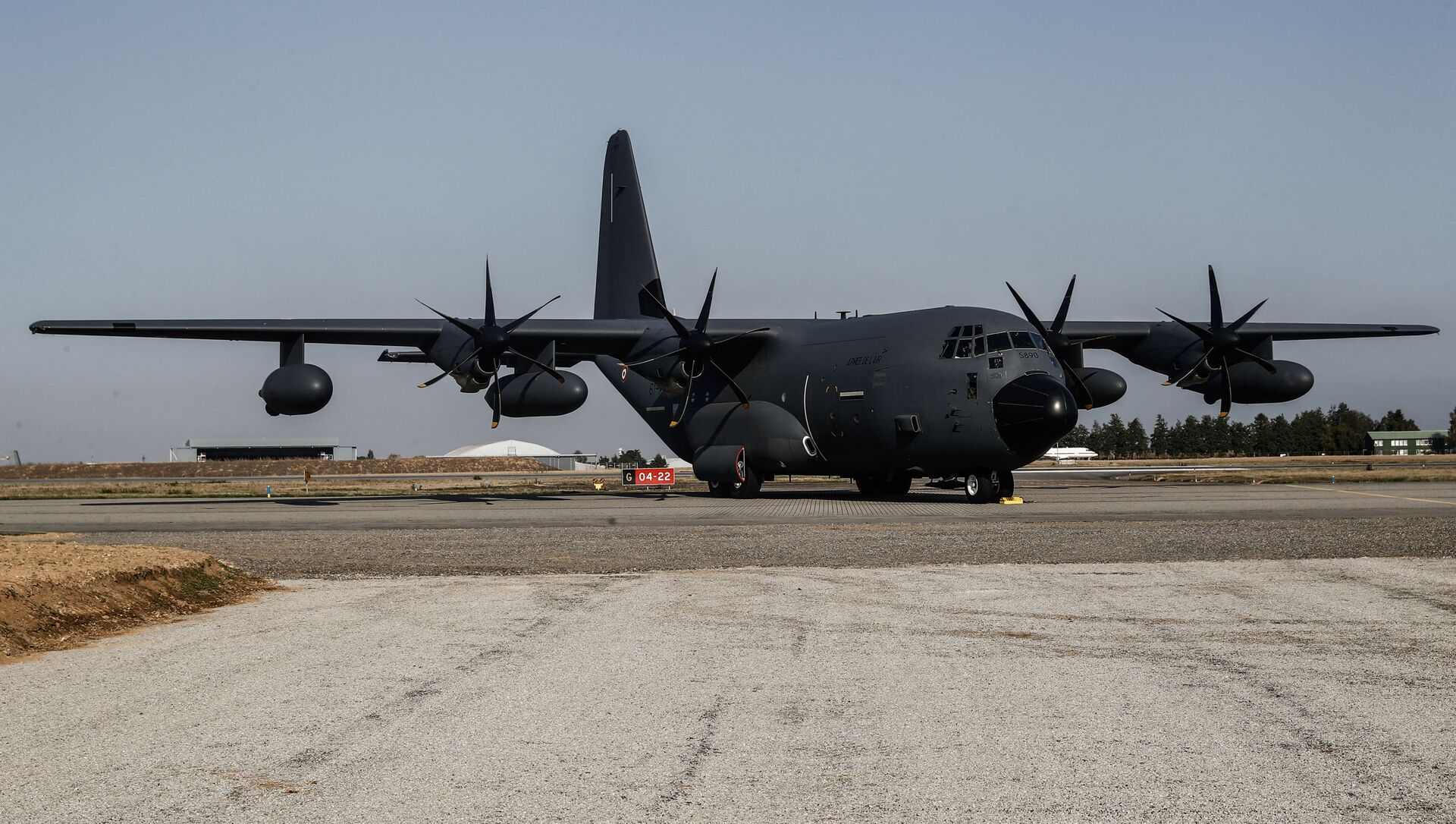Two US Air Force C-130 J Hercules military transports– one flying out of Riga, Latvia, and the other out of Stuttgart Army Airfield in Germany, have arrived in Kiev over the past twenty-four hours, data from flight tracking services harvested by open-source intelligence observers indicates.
🇺🇸🇱🇻🇺🇦a USAF C130J Hercules HKY703 military transport plane lands in Kiev coming from Latvia (Riga RIX Airport), Ukraine about an hour ago.#Ukraine #USA pic.twitter.com/I8Tj5EXrJw
— 🆁🅰🅶🅴🆇 (@theragex) April 11, 2021
C-130 Stuttgart Army Airfield-> Kiev pic.twitter.com/ul1JOgHYMe
— OSINTtechnical (@Osinttechnical) April 12, 2021
The flights’ missions and cargo are unknown, with the Pentagon giving no indication as to their purpose.
The planes’ deployment follows OSINT reports from last week indicating that at least three US military aircraft had arrived in Ukraine between 2 and 6 April, including a Boeing C-17 Globemaster III strategic transport flying to Lviv, western Ukraine, from an airbase in the continental United States, and two planes - a C-130 and a C-17, are making their way to the country from Germany’s Ramstein Air Force Base. Their missions and cargoes are also unknown.
Another US Air Force transporter C-17 (board 06-6161) under cover of night follows from the #NATO Ramstein base to Kiev Borispol airport with military cargo. We didn't fly so often before ...#USA #UKRAINE pic.twitter.com/zOCgckMoiI
— Sukhoi Su-57 Felon 🇷🇺🇮🇳 (@I30mki) April 5, 2021
In a related development, OSINT observers reported Sunday and Monday about RQ-4 Global Hawk spy drone activity around Crimea and eastern Ukraine.
USAF RQ-4 still tracking over Ukraine. Assuming RQ-4B Block 40, the AN/ZPY-2 sensor has a range of at least 250km, with a resolution of, at most, 1 foot. Based on that sensor range, here's where she's looking and what she's seeing. #ADSB #AE540E pic.twitter.com/4Nwc4D0Tl6
— Amelia (@ameliairheart) April 11, 2021
US President Joe Biden spoke with his Ukrainian counterpart Volodymyr Zelensky on 2 April, with the White House releasing a brief readout promising that Washington would provide “unwavering support” to Kiev “in the face of Russia’s ongoing aggression.” On Sunday, Secretary of State Antony Blinken said there would be “consequences” if Moscow acted “aggressively” against Ukraine.
On Monday, Russian Foreign Minister Sergei Lavrov warned the US and its allies not to fuel Kiev’s “militaristic sentiments” amid concerns that the country’s leaders may be gearing up to launch a new offensive against the Donbass separatists. He stressed that Russian activities on Ukraine’s borders were related to the fact that Russia borders Ukraine, and asked what US troops and warships were doing in the country, thousands of kilometers from America’s shores.
The war became a frozen conflict with the signing of the Minsk Agreements in February 2015, which committed Kiev to grant the Donbass republics broad autonomy in exchange for a formal return to Ukrainian jurisdiction. The accords led to an uneasy ceasefire between Kiev and the breakaway regions, but Ukrainian lawmakers have refused to provide them with autonomy, thus freezing the reintegration process.


